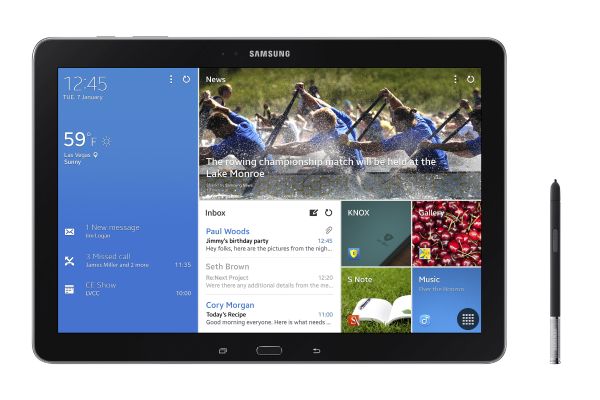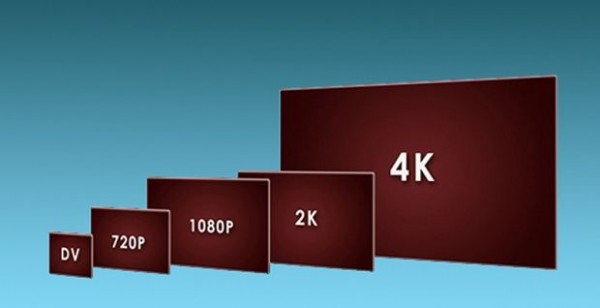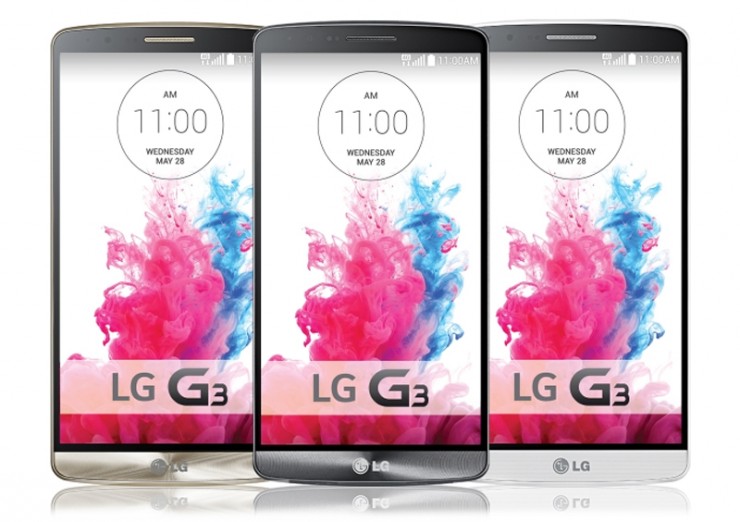A lot has been made about the ‘new standard’ in mobile technology, the 2K display resolution. Most manufacturers who have announced, or will announce, their new flagships are selling the 2K resolution like it is the next frontier, and maybe it is. But how much difference is there in having a 2K resolution on your mobile device; do you get any tangible benefits from having it? That’s what we’re here to discuss today, and hopefully you’ll be able to make your own decision about it once we’re done.
First of all, some background. The 2K display name comes from the fact that the resolution is over 2000 pixels wide (2560 to be exact). The full resolution, 2560×1440, is also twice the height of ‘conventional’ HD screens; the height of a 2K display is 1440 pixels high whereas HD measures exactly half at 720 pixels. This is why you will occasionally hear a 2K display referred to as ‘Quad HD’ i.e. able to fit four HD screens into one Quad HD screen.
The first phones to boast having 2K displays were the Vivo Xplay 3S and Oppo Find 7. While these phones can be blamed for instigating this whole ordeal, the ‘arms race’ mentality of the smartphone industry is far more deep-seeded. Manufacturers strive to out-do each other, even if the benefits to the consumer are diminishing; who doesn’t love bigger numbers, right?
So in the case of 2K displays, what exactly are the considerations that we need to take into account, and how does it affect the phone itself?
 First and foremost, many Android users will place extra importance on performance figures. In the last few months, we’ve had unconfirmed benchmarks of devices that have, or will, come in two variants (Samsung Galaxy S5 and Oppo Find 7). Interesting, in both cases, it was suggested that the ‘lesser’ model, which had a 1080p display, would either perform at, or above, the level of the ‘premium’ model with the 2K display.
First and foremost, many Android users will place extra importance on performance figures. In the last few months, we’ve had unconfirmed benchmarks of devices that have, or will, come in two variants (Samsung Galaxy S5 and Oppo Find 7). Interesting, in both cases, it was suggested that the ‘lesser’ model, which had a 1080p display, would either perform at, or above, the level of the ‘premium’ model with the 2K display.
The most likely explanation for this phenomenon is likely the increased power consumption and CPU usage required to run the bigger screen resolution. You may argue tooth and nail that these results are unconfirmed or from prototype testing and therefore not final, however the logic of this hypothesis is sound, as well as the fact a similar occurred when screen resolutions jumped from 720p to 1080p about a year ago. This isn’t to say that 2K displays cause bad performance; it is more the fact that we do not have processors which give us enough of a processing advantage to offset the additional load that a 2K display brings with it.
 A flow-on effect of the increased power consumption due to the 2K display is of course decreased battery life; even disregarding high performance scenarios, the 2K display is going to demand more power than a 1080p display simply by virtue of the increased number of pixels to be output. This will occur even in everyday use; many of you will know that Android device displays are far and away the biggest consumer of battery power.
A flow-on effect of the increased power consumption due to the 2K display is of course decreased battery life; even disregarding high performance scenarios, the 2K display is going to demand more power than a 1080p display simply by virtue of the increased number of pixels to be output. This will occur even in everyday use; many of you will know that Android device displays are far and away the biggest consumer of battery power.
Moving away from objective facts for a bit, we can also consider the actual perceivable detail ‘improvement’ in having a 2K display. For a reference comparison, TVs we saw at CES 2014 have only just made 4K resolution mainstream. While the resolution comparison between mobile and TV isn’t perfect, it’s pretty obvious that TVs are far larger than mobile devices, yet why do we need such a huge number of pixels (3,686,400 to be exact)Â in the same area as our palm?
 For a more scientific comparison, a 65-inch 4K TV will have 68 pixels-per-inch (ppi), the most common measurement of detail. Furthermore, Apple refers to its Retina display as a device that has around 326ppi, hotly contested as the most detail an eye can perceive. The new Oppo Find 7 variant which has a 2K display, will have 538ppi on its 5.5-inch screen, and even the Find 7a is going to have pretty impressive 441ppi.
For a more scientific comparison, a 65-inch 4K TV will have 68 pixels-per-inch (ppi), the most common measurement of detail. Furthermore, Apple refers to its Retina display as a device that has around 326ppi, hotly contested as the most detail an eye can perceive. The new Oppo Find 7 variant which has a 2K display, will have 538ppi on its 5.5-inch screen, and even the Find 7a is going to have pretty impressive 441ppi.
With this in mind, nobody is going to say that a 4K TV is a bit blurry, and (Apple prejudice aside) nobody is going to disagree that the iPhone screen is one of the best on the smartphone market right now. Sure, a 2K display is going to look desperately good, but is it going to look that much better than a 1080p display? And even if this were true, can we really legitimize the additional pixel real estate if the only other tangible effects are going to be increases in power and battery consumption?
 The case for tablets is a bit better than that for mobile devices; tablets are designed with large enough batteries to support larger display resolutions, and while battery life would still take a hit due to a possible 2K display, the effect wouldn’t be as profound as on a mobile device. Indeed, the Samsung Galaxy Note Pro carries a 12.2-inch 2560×1600 resolution display, which is basically the gold standard for tablet resolutions, big and small, and it doesn’t look like anybody is going to venture much further than that any time soon. So why are manufacturers insisting on pushing mobile device displays to 2K resolution?
The case for tablets is a bit better than that for mobile devices; tablets are designed with large enough batteries to support larger display resolutions, and while battery life would still take a hit due to a possible 2K display, the effect wouldn’t be as profound as on a mobile device. Indeed, the Samsung Galaxy Note Pro carries a 12.2-inch 2560×1600 resolution display, which is basically the gold standard for tablet resolutions, big and small, and it doesn’t look like anybody is going to venture much further than that any time soon. So why are manufacturers insisting on pushing mobile device displays to 2K resolution?
We’ve covered quite a few arguments here, but probably the biggest take home message here is this: this is only the situation for 2K displays in March 2014 (and possibly the very near future). 2K displays are only just become available, so it’s natural that pairing them with yesteryear’s technology is going to result in some teething issues. Even with slightly upgraded processors and slightly bigger batteries, we’re only going to be seeing minute improvements in the areas that matter to us, if that.
As such, it’s very difficult to recommend a mobile device with a 2K display right now; despite it’s obvious marketing and technical brilliance, it really has no tangible advantages for you and me as consumers, and arguably never will.
What do you think about 2K displays? Do you have any additional considerations to add to the discussion? Feel free to add to the discussion by commenting below.









